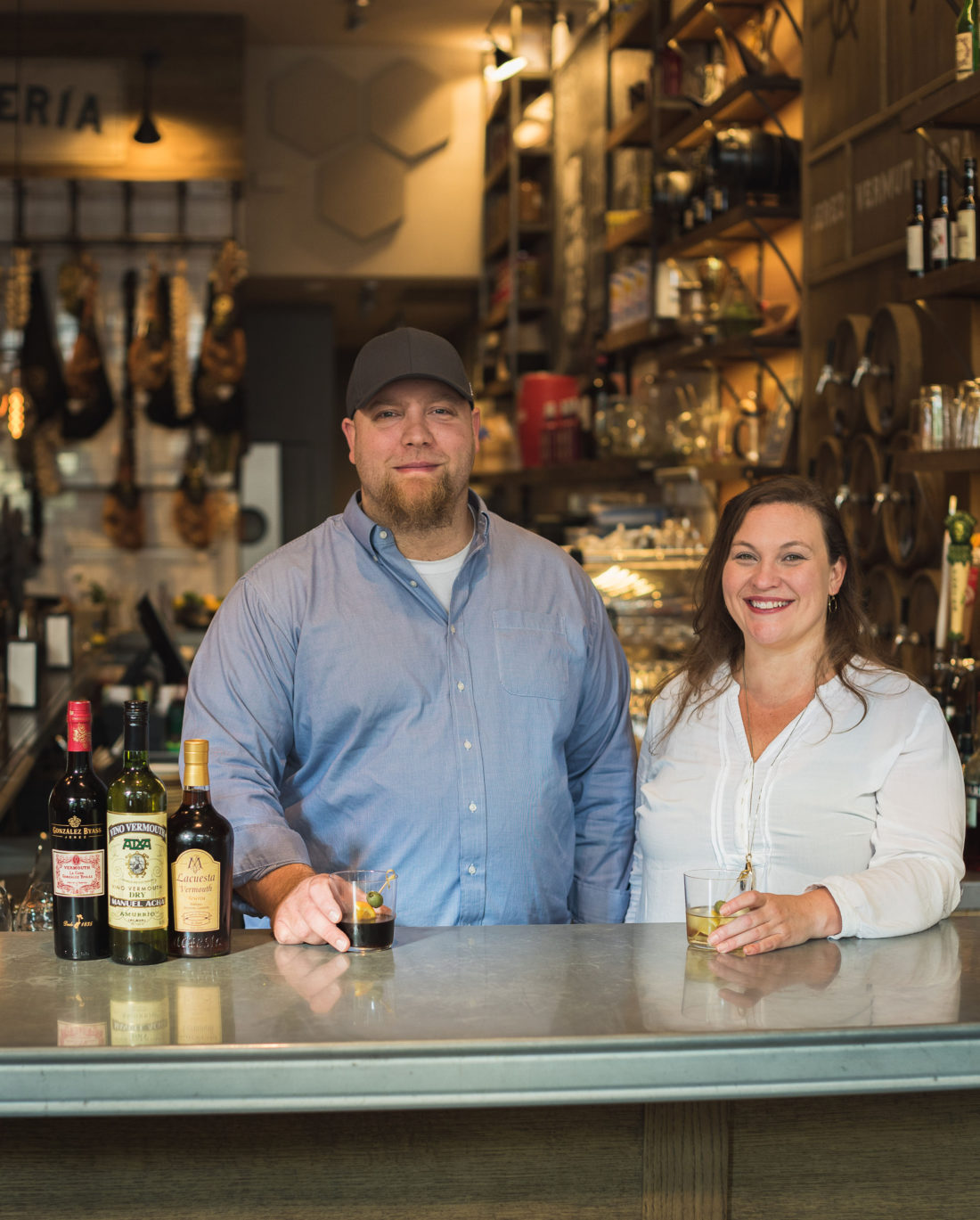In our previous feature, we began our discussion of vermouth by looking at the most widely known varieties — styles based on French and Italian recipes. But those traditional dry and sweet vermouths are only the beginning. Sweeter white vermouths are now available, and while most vermouth is still made using neutral white wine as a base, some red wine-based varieties are gaining a foothold in the marketplace.
Spain, a country with a viticulture history that dates from before 3000 B.C., is home to a wide array of delightful vermouths that bear the character of those traditions. “There was a vermouth renaissance in Spain that started about 10 years ago,” says Jessica Salyer, restaurant and wine program manager at downtown tapas restaurant Cúrate. She explains that at that time, vermuterias — the vermouth equivalent of a pub — began popping up across the Iberian Peninsula, and frequenting them “became a hipster thing to do in Spain.”
Like their counterparts from France, Italy and elsewhere, Spanish vermouths are primarily offered in dry and sweet styles. “With white vermouth, you get a little bit more citrus and herbal notes with the bitterness,” Salyer says. “With red vermouth, you’re going to get more caramelization and more of baking spices coming across.”
Spanish varieties, she says, tend to be more Mediterranean-influenced and full-bodied than a typical Italian vermouth. The drink is a centerpiece of Cúrate’s menu. Bringing a touch of vermuteria culture to Western North Carolina, the restaurant even offers some vermouths on draft. Vermouth is often garnished with both an olive and citrus peel, both of which complement the drink’s herbal qualities.
Salyer attributes vermouth’s resurgence in popularity in part to the drink’s versatility. “At Cúrate, there are three different ways — all chilled — that we serve it,” she says. “Doing it neat, putting a big rock [ice] in there or a little soda water on top of it.” The last option, she notes, is popular among lunch patrons. “Soda opens up the vermouth, bringing out the herbs. And it also lightens it up for somebody that, at 12 to 2 o’clock, doesn’t want a 16% [alcohol] drink.”
Hoping to ride the wave of the overall surge of interest in all things related to craft cocktails, New World vintners have begun making forays into vermouth, too. As Sam Slaughter wrote for the Tales of the Cocktail Foundation in his 2016 essay, “The Story of American Vermouth,” production began in 1998, “but it took almost a decade for more American-made vermouths to start popping.”
Today the number of American vermouths remains small, but one of the first to hit the market — Vya — is found behind the bar at many Asheville drinking establishments. (American mass marketer Gallo sells red and dry vermouths, but those are to fortified wine what Miller Lite is to craft beer.)
Domestic brands make up a portion of the extensive vermouth selection at Appalachian Vintner on Biltmore Avenue. Co-owner Geoff Alexander notes that with the increased popularity of the beverage, the distinctions between types are more blurred than ever. “Just about everybody makes three kinds now,” he says. “Sweet red, sweet white and dry white.”
He notes that while there are plenty of budget-friendly brands — domestic and imported — his store doesn’t stock some of the most common ones. “They don’t always use the highest quality ingredients,” he explains. “At those prices, they can’t.”
Alexander says his customers “want that step above” for their cocktails. “It’s like cooking,” he says. “If you’re making a really good dish, don’t add some not-very-good ingredient. If you’re already going the extra mile, why not add the best you can?”
The mixes of ingredients in vermouth are closely guarded secrets, not unlike Colonel Sanders’ fabled 11 herbs and spices. But a number of do-it-yourself recipes circulate online; being mildly adventurous, we recently gave one a try. Once it was all done, we poured a small serving for each of us with great anticipation, sipped it and … duly poured the contents of the bottle down the kitchen sink. It was terrible.
Undaunted, we’ll try another recipe in the future, but for now, we’re reminded that quality vermouth commands a premium price for a reason: It tastes delightfully complex.
Salyer has noticed that those new to vermouth are often surprised by its taste. “They think they’re going to be tasting cough medicine,” she says with a laugh. “And then they’re really blown away by the floral notes, the sweetness that comes across in them,” she says. “People are expecting to have that bitter, medicinal quality, not realizing that there are beautiful, herbaceous, citrus notes. Those balance out that bitter.”
She adds, “I can see the surprise on people’s face when they drink vermouth for the first time.”




Before you comment
The comments section is here to provide a platform for civil dialogue on the issues we face together as a local community. Xpress is committed to offering this platform for all voices, but when the tone of the discussion gets nasty or strays off topic, we believe many people choose not to participate. Xpress editors are determined to moderate comments to ensure a constructive interchange is maintained. All comments judged not to be in keeping with the spirit of civil discourse will be removed and repeat violators will be banned. See here for our terms of service. Thank you for being part of this effort to promote respectful discussion.